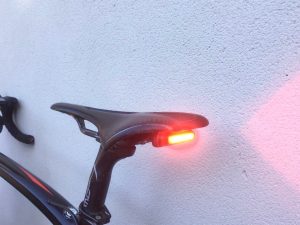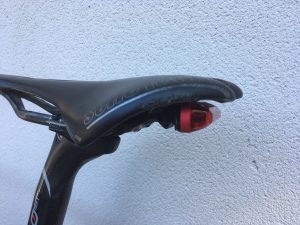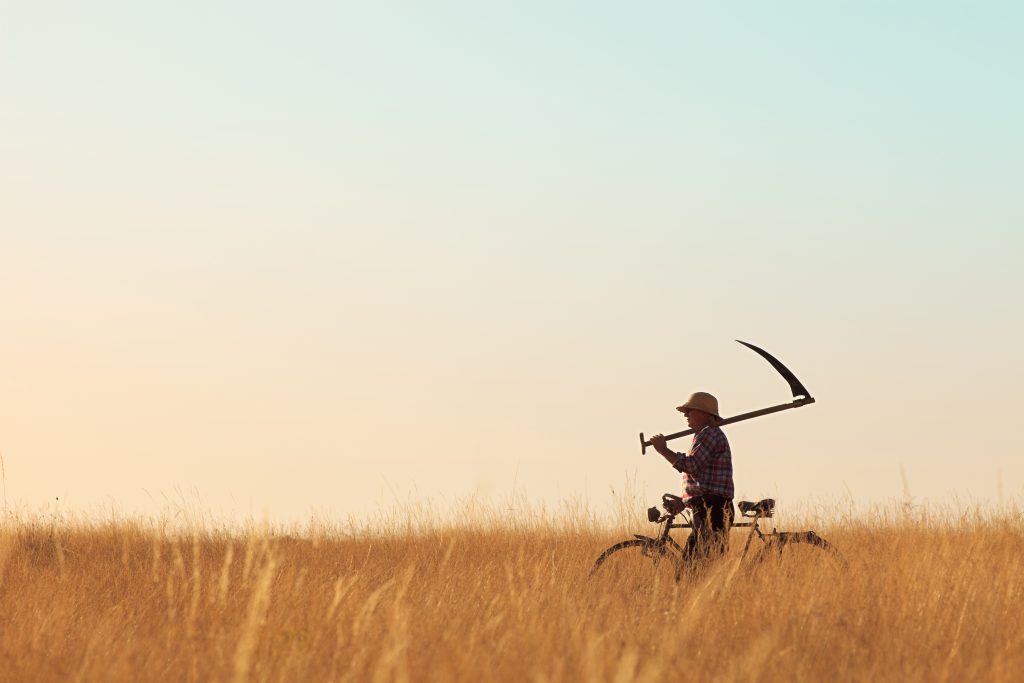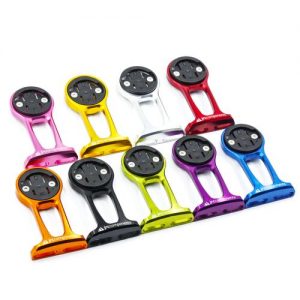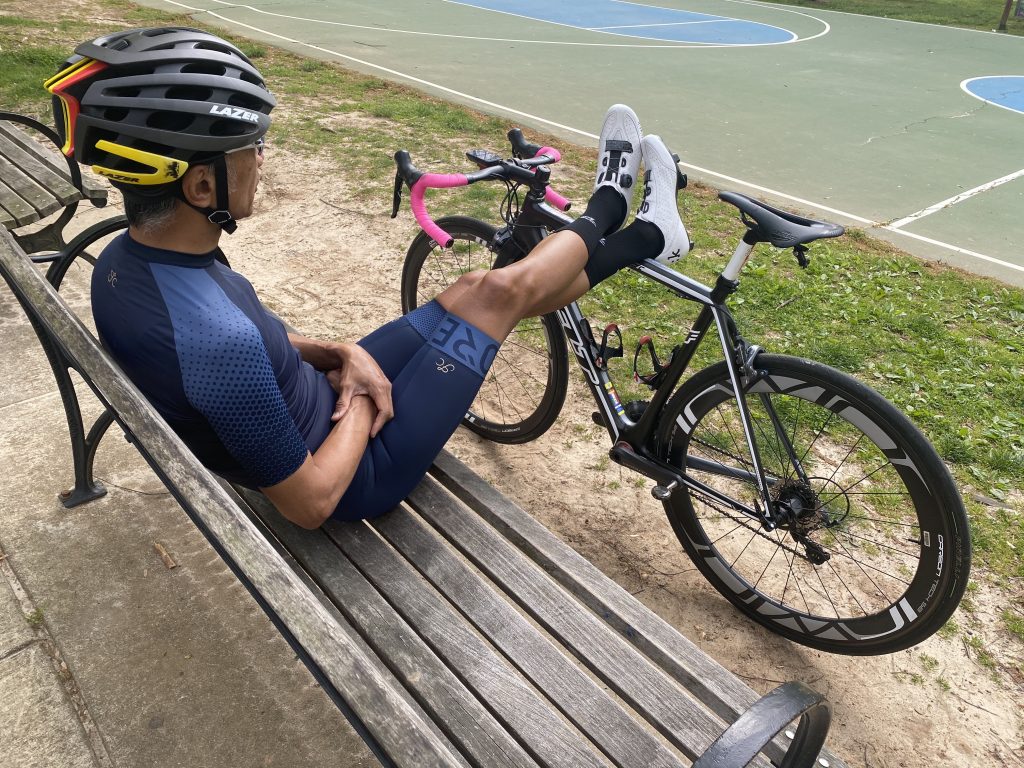Previous Posts
- Tommy Prim by Wiscot June 7, 2020Teocalli4101
Photo: Tommy Pim by Bianchi
Just as Knut Knudsen’s career was winding down after his oh-so-close-but-no-cigar attempt to win the 1979 Giro d’Italia, he was joined on the Bianchi team by a massively talented young Swede called Tommy Prim. After outstanding performances in 1978 and 1979 in the highly rated Italian stage race Settimana Bergamasca, at the end of 1979 Prim turned professional with the Italian Bianchi-Piaggio squad. It was not a hard choice: Norwegian rider Knut Knudsen and fellow Swede Alf Segersäll were in the team already. The team manager would be the experienced Giancarlo Ferretti. Good things were on the cards.
Like his Scandinavian teammate Knudsen, Prim would also come agonizingly close to winning a Grand Tour but fall short, not because of physical misfortune, but of the curse of being not from Italy. The situation for Bianchi in 1981 was rather like the philosophical paradox involving Buridan’s ass. This involves said animal being placed between a bale of hay and a bucket of water. The rationale is that the ass will chose whichever is closer. The result, however, is that the ass can’t decide which to go to – the water or the hay – and subsequently dies of hunger. Such was the scenario for Bianchi in 1981. On the team were the Swede Prim and Italians Silvano Contini and Gibi Baronchelli. Neither Prim, Contini or Baronchelli can be considered asses, in fact they metaphorically represented hay and water. The ass was Ferretti who couldn’t decide on which rider to go with as leader and so squandered his chances to win. Another ass was race director Vincenzo Torriani who, in a move designed to slant the race Giuseppe Saronni’s way, introduced of a series of time bonuses for each stage. First place earned a 30 seconds bonus, 20 seconds for 2nd and 10 seconds for third. Even the three time trials carried bonus seconds! This would dramatically affect the result more than he could have anticipated.
In addition to the expected Moser-Saronni rivalry, other Italians ready to go for pink were Roberto Visentini of Sammontana-Benotto, as well as the Bianchi trio of Prim, Contini and Baronchelli. Also at the start line was Inoxpran’s Giovanni Battaglin. No-one rated his chances as he had just won the Vuelta d’Espana and back in those days these two Grand Tours basically butted up against each other. Battaglin started the Giro on three days rest. What was not reckoned with was Battaglin’s smarts and realization that it was very much a case of playing the long game and seeking consistently good stage placings ― and taking advantage of rivalries. For example, by stage 6, Saronni had three wins and 90 seconds of bonuses that gave him the maglia rosa by 24 seconds from Moser.
By stage 18, with just three stages to go, the opportunity to win overall looked good for Bianchi with three riders in the top five. A clean sweep of the podium was not beyond hope. Contini held pink, followed by Prim at 59 seconds, Battaglin at 1:35, Saronni at 1:42 and Baronchelli at 1:59. It was that close. However, stage 19 saw Battaglin make his decisive move on a 208 kilometer mountain ride to San Vigilio di Marebbe that tackled the Palade and Furcia climbs. The Inoxpran rider won the stage by 10 seconds from Saronni with Prim tied for third with Josef Fuchs 11 seconds behind the winner. The bonus gave Battaglin an additional 30 seconds on top of the time gaps with Baronchelli and Contini both losing 1:02 on the day. Contini now led Battaglin by only 3 seconds with Prim a further 5 seconds back. Just as the Vuelta winner should have been on his knees after almost six weeks of racing, he was getting stronger and Ferretti was looking more and more like Buridan’s ass.
Battaglin then turned the screws tighter on the mountainous stage 20 to Tre Cime di Lavaredo, knowing that with a sprint stage and a short time trial to come, he needed to gain as much time as he could when he could. He finished third behind ace climber Beat Breu and veteran Josef Fuchs, gaining another ten bonus seconds to put him in pink, Prim and Contini finished 35 seconds and 1:37 behind respectively. The sprint stage was won by Pierino Gavazzi and didn’t affect the general classification. Prim rode his heart out to finish second behind teammate Knudsen in the final time trial but the Inoxpran rider finished third for ten more bonus seconds giving him a total of 60 seconds in bonuses for the whole race. Contini and Baronchelli were well outside the top 10 on the last day.
When Battaglin pulled on the final maglia rosa in Verona, he was the winner by 38 seconds from Prim. On actual time, Prim had won, but Battaglin had won more bonuses because of one stage win and three 3rd places. Prim had one 2nd place. Saronni was third at 50 seconds – a result more than aided by the 2:10 in bonuses he accumulated. Calculating time bonuses overall Battaglin had picked up 60 seconds, fifty of those in three of the last four stages; Prim had accrued 20. Bonus difference? 40 seconds to the Italian. The rules had been established on stage one and Inoxpran played them to maximum advantage.
The feeling that Prim coulda, woulda, shoulda won is hard to shake. His second place was no flash-in-the pan. It did show however, a lack of tactical nous by Ferretti who should have played his cards better. Designating a single team leader and watching who got top three placings would have helped the Bianchi cause. Instead, Battaglin and his DS Davide Boifava played the field like a fiddle – aided of course, by Battaglin’s remarkable form and tactical smarts in timing his efforts to perfection.
In 1982 Prim finished second in the Giro again, this time beaten by the majestic Bernard Hinault by 2:35. Again, Bianchi went with two captains and Prim and Contini finished 2nd and 3rd twelve seconds apart. In 1983 he was the designated leader for Bianchi and took the maglia rosa after the first stage team time trial. Alas it did not last and poor form in the mountains saw him finish 15th. In 1984 Prim was on form, winning Tirreno–Adriatico stage race but he crashed right before the Giro. 1985 saw Moreno Argentin brought onto the Sammontana-Bianchi squad and the Swede finished fourth behind such greats as Bernard Hinault, Francesco Moser and Greg LeMond. 1986 was the beginning of the end as his 21st place in the Giro saw his team withdraw from the Tour of Sweden which they – and he – had always ridden since its reintroduction in 1982. So disgusted by this, Prim announced his retirement. He was 31.
After his retirement, Prim held various jobs: he opened a bike shop in Sweden, worked for a mail order firm, a saw mill and then a salmon smokery. From 2000 – 2004 he was team manager at Team Crescent, a Swedish pro squad designed to develop Swedish under 23 riders, but he will be remembered as a rider who was not just good but great but also unlucky. It pays dividends to not just play by the rules but truly understand them and it’s not always the strongest who wins, but the smartest.
Continue reading → - Riding during COVID June 4, 2020chuckp4105
Hey all! Sorry I’ve been absent of late. Hope everyone is doing well during these strange and crazy times. Even though we have been under “stay at home” status, I’ve been able to ride … a lot. As I type, I’m over 3,100 miles for the year and logged 790 miles last month! Have been able to get out for long rides on the weekends. The last two were semi-epic. Both 70-milers with a lot of up-and-down, i.e., Belgian/Ardennes Classics-esque.
https://www.strava.com/activities/3505516021
https://www.strava.com/activities/3543460840
Hoping to be able to do 100 miles on my birthday later this month. Cheers y’all
Continue reading → - Zwift for Dummies June 1, 2020Teocalli4072
Sorry, I’ve been a bit absent as we are in the midst of trying to move house during the lockdown. Well, the lockdown has tempted me to join the Zwift experience, sort of.
So to be clear the Dummy here, hopefully, is not me but rather that I have a Dumb Turbo and Dumb Rollers. So what is the point in joining Zwift?
My reasons for joining were mainly to hook up with an internet group that were starting group rides in lieu of an event that was planned in Nice to ride the TdF first stage a week before the main event. So, seeing how it would pan out in reality was interesting as to whether I could have a meaningful ride with those with Smart Trainers.
In fact it pans out pretty well. Zwift will adjust your virtual speed based on it’s own calculations of your power (I don’t have a power meter either). It does seem to help if you have cadence to add to speed as it can then make a better assessment of your power. However, that is all very hypothetical as my Turbo is older than any model listed and using the most basic Tacx model it suggests set resistance at Stop 2, which is a bit arbitrary as to what resistance that equates to and which is actually Stop 2 (0,1,2 or just 1, 2?). Having said that, if I go 0,1, 2 then riding on the flat, or downhill, is like climbing some of the steepest hills around here so 1, 2 seems right.
Anyway, it does work reasonably well for a group ride.
Riding on the dumb Turbo, on the flat and 1-2% climbs the predicted virtual speed is not far off but on steeper climbs it is somewhat generous and it would be easy to fly off the front of the group. Net there is some backing off so as not to produce a silly speed/power. In terms of effort, obviously I could manually up the resistance but then it predicts a much slower speed so I risk tumbling out of the back of the group. Net I balance between the two a bit to allow myself some “standing time” by manually clicking up the resistance to relieve being sat static on the saddle for the duration of a ride, then as I get to the back of the group I click it back down again. Makes a bit of a mockery of any stats Zwift produces but at least it lets me ride with the group.
So on a climb you net have to “ride” further as Zwift adjusts your virtual speed. We did Alp de Zwift as a head to head the other week and while my time was probably generous I could not catch the leading whippersnappers. I’m assuming they were on Smart Trainers……….I was just ahead of someone who I thought I should beat so perhaps it did a pretty good job of adjusting my virtual speed.
Riding on the dumb Rollers, on the flat my virtual speed is a bit high…… The disadvantage of dumb Rollers is not being able to stand and pedal against resistance to get some pressure relief. With the group rides we do set them as ‘no drop’ which is fine as long as you don’t stop pedalling. So taking a mid ride break is not really practical. Normally I would stop every 10 miles for a stretch.
The amusing part on the rollers is on the high speed descents. On the sharp bends the visual effect on the laptop screen can be a bit disorientating and I can see it could be easy to crash as a result. So far I have avoided that but have come close on a couple of occasions. The other thing is participating in any banter, attempting to use the keyboard while on the Rollers is perhaps not a good idea and might prove expensive to trashing both the bike and the laptop!
Zwift does seem to help the sensation of time pass and I’m definitely sold longer term and will be looking at a Smart Turbo sometime in the future. As most Turbo Trainers are made in areas impacted by the global lockdowns it was interesting that for a while you could not buy one for love nor money. Should have bought shares in Zwift, Turbo manufacturers and Zoom at the outset of all this.
Stay well, sane and safe. Hope to see you all on the other side, whatever that turns out to be.
Continue reading → - Stelbel May 15, 2020Teocalli4085
Confirmed that the Stelbel printshop is back in full swing and they’ve posted this on their FB page. Maybe, just maybe………. Seeking confirmation…………..
Continue reading → - Rumination on The Giro by Wiscot May 11, 2020Teocalli4077
Lead Photo – Wikipedia (2019)
The 1989 Tour de France’s final-day time trial loss by Laurent Fignon to Greg LeMond is one of modern cycling’s defining moments. LeMond, 50 seconds behind the yellow-clad Fignon, used the latest TT technology to maximum advantage, powering over 24 kms of Parisian streets to beat le Maillot Jaune. On the day the ride was hailed as a miracle for the American and a devastating defeat for the Frenchman. However, unknown at the time was the extent of Fignon’s excruciating saddle sore that made riding almost too painful to bear. But he was French, in yellow, and this was the Tour – a no-show on the last day into Paris (and Fignon’s home town) was not an option. The likelihood of LeMond beating Fignon by more than 50 seconds seemed remote. As we now know, the American used new-fangled time-trial bars and helmet to maximum advantage and won overall by 8 seconds. Arguably, that 8 second loss scarred Fignon for the subsequent 21 years until his death in 2010.
As well-known as this particular piece of cycling lore is, we know that history has a habit of repeating itself and indeed this was not the first instance of a grand tour being decided by a handful of seconds in a time trial with injury playing a part.
In 1976 with just two days to go in the Giro d’Italia, Belgian rider John de Muynck was seemingly safely ensconced in the pink jersey with a 25 seconds lead over Italian favorite Felice Gimondi. All that remained after the penultimate stage was a short time trial and an easy criterium around Milan; the win seemed in the bag for the Brooklyn rider if he made it to the last day safely.
However, events on that penultimate day would conspire to dramatically affect what should have been a simple matter for De Muynck to take his first grand tour win.
On the descent of the Colle Zambla, part of the road was undergoing repairs and there was a great deal of loose gravel for the riders to negotiate. To make matters worse, some of the gravel was just after a corner and de Muynck was, perhaps unwisely, taking a drink at the time. His attention distracted, the Belgian’s front wheel went out from under him and he crashed hard. These were the days of no helmets and often no gloves. While nothing was broken, de Muynck suffered serious cuts and grazes to his face, hands, legs and arms. Time ticked away as he picked himself up, checking his injuries for serious damage. Luckily, the wounds were confined to the flesh, not bones, and in a double stroke of luck his compatriot Eddy Merckx, who had been dropped and was suffering greatly with a saddle boil, caught up with De Muynck and paced his fellow countryman back to the head of affairs to finish with the leaders. The jersey, and the race, seemed to have been saved.
Effectively out of contention for the overall win himself, Merckx was worried and concerned about his fellow Belgian’s chances of wrapping up the win. “Tomorrow it will not be all right. With his hands as they are he will not sleep above an hour.” The great Belgian’s words proved prophetic – the next morning De Muynck admitted he had not slept at all, “The pain hammered away in my fingers and without sleep I feel dead beat. I feel as if my knees are made of water.” Ahead of him lay 28 kilometers against the clock and a margin of only 25 seconds on the smooth, stylish Gimondi. Under normal circumstances, de Muynck might have lost a few seconds, but would have retained his lead and the Maglia Rosa.
After being counted out of the start house, Gimondi, a fine rider against the clock, rode superbly, finishing third behind Bruyere and Marcussen. De Muynck, suffering terribly in his desperate bid to retain pink, finished 44 seconds behind Gimondi to lose the jersey by 19 seconds. With the final criterium merely a showpiece for the crowds and offering no opportunity to reclaim time, the Italian cruised to the final Maglia Rosa. In the overall standings De Muynck had to settle for second place – every one of those 19 seconds and more had been lost in just 28 kms against the clock and the blame can be laid at injury’s door.
As devastating as this loss was for De Muynck, he found redemption two years later. In 1978 and riding for Italian-based Bianchi-Faema, he rode a superb Giro to win by 59 seconds with, ironically, Gimondi as a teammate. (Alas, Fignon never had the opportunity to win the Tour again and for many observers the 1989 loss became better known than his two fine wins in 1983 and 84.)
While the 76 Giro set a precedent for the 89 Tour, the same Giro presaged its 2011 edition and the death of Wouter Weylandt. On the very first stage in 1976—an innocuous short 55 kilometres loop around Catania—Juan Manuel Santisteban crashed heavily into a guard rail and was dead by the time the ambulance reached the hospital. This description is eerily similar to Weylandt’s accident. In both instances what were regarded as straight-forward transitional or easy stages were turned into days of tragedy.
So what does a knowledge of history and the awareness of precedent teach us? One, much hyperbole surrounds sport, and yes, Fignon and de Muynck’s losses could be regarded as “shocking” or “devastating” but what happened to Santisteban and Weylandt puts things into a proper perspective. Two, we are reminded that nothing should be taken for granted. While cycling is a magnificent sport it has its cruel side: on one hand situations beyond anyone’s control can turn a potential winner into a shocked runner-up; on another, a routine ride could unknowingly be our last. We ride with the confidence, we follow the rules, we feel in control, but in reality we seek the fine point of equilibrium between caution to survive and freedom to pursue happiness.
Recent years have seen the Giro organizers seek ever spectacular stages to wrest back some of the glamour and status that the Tour has long enjoyed over its grand tour rival. No Tour or Giro would be complete without its heroics, blood, sweat, and tears of pain or joy, but as we (hopefully) watch the battle for the Maglia Rosa this year, in whatever form it may run in the lockdown, let’s hope that everyone gets through tired — maybe a bit battered and bruised — and alive.
Continue reading → - Adding bit of Jewellery May 3, 2020Teocalli4058
I don’t know about anyone else but during the lockdown I’ve found myself looking at adverts in the magazines more than I used to and following up on many of them via their web sites.
Case in point has been JRC Components https://www.jrc-components.com that has been popping up with their colourful components from Jockey Wheels to GPS Mounts they have us covered with a range of eye catching colours.



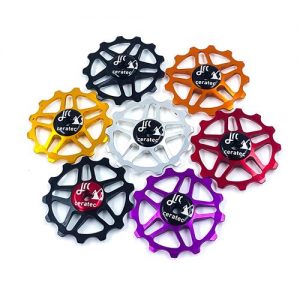
Specifically I was sorting out Wahoo mounts for each of my bikes now that Summer seems to be approaching and I didn’t want to be swapping my existing mounts between bikes. So I plumped for a fetching blue mount for the Pina Sestriere.


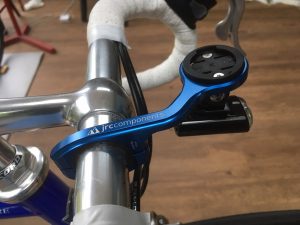
I have to say that I’m really pleased with the purchase. The mount is well made and the Wahoo GPS is really secure. I also bought their underslung GoPro mount so that I can pop my front light neatly underneath.
From JRC’s details the mounts are machined 6061 Aluminium body with a hard-wearing resin adapter. Lightweight at only 36 grams (including bolts). Suitable for all rounded 31.8mm handlebars (in my case I had an adapter shim for thinner bars).
Available in Garmin and Wahoo configuration with a bolt in puck so replaceable if worn. Mount comes with two way holes ready tapped for fitting GoPro adapter underneath.
A discrete bit of cheerful jewellery for the bike.
Once the Stelbel finally gets painted I’ll be back for the best match out front mount (top left) to mount on the stem bolts. Something will end up with some of those jockey wheels too.
Call me a sucker for a bit of bling if you like! All I really need is to work out how I can get sponsored for posting these things!
Continue reading → - Bernard Hinault’s 1980 Liege-Bastogne-Liege by Wiscot April 25, 2020Teocalli4051
Bernard Hinault’s tires swished and hissed as they plowed through the snow and slush. They were chorused by his rhythmic heavy breathing, the dull roar of the attendant cars and motorbikes that hovered behind him like a hallelujah choir (or a bunch of vultures), and the occasional cry of support from a hardy fan beside the wintry road. Whatever the outcome of the Frenchman’s audacious solo attempt to win Liege-Bastogne-Liege, his team car and the media wanted to be there to celebrate his win “’ or feast on his failure.
Snow had been ever-present since the first of Liege-Bastogne-Liege’s 244 kilometers and, according to L’Equipe, Gilbert Duclos-Lassalle said that some riders picked up their race numbers and didn’t start – they returned to their hotel. As the race wore on the weather got worse inflicting massive attrition upon the peloton: by kilometer 70, 110 of 174 starters had abandoned. Hinault, who despised bad weather, had, in fact planned on retiring at the Vielsalm feeding station but instead, changed bikes and continued on, partially because his teammate Maurice Le Guilloux was still in the race and as team captain, his pride meant he wanted to be the last to abandon. Hinault also persevered because he had a strong bond with L-B-L: in 1977 as a new pro, Hinault won the race, and in 1979 he finished second.
At the top of the Stockau, Belgian hardman Rudy Pevenage led by 2:15. Twenty kilometres later Hinault and his companions Ludo Peeters, Silvano Contini and Henk Lubberding pulled him back. With 80 kilometers to go, Hinault attacked on the Haute-Levee. Perhaps too cold to respond or hopeful that he couldn’t ride 80 kms to the finish by himself, no-one else joined him. This raised two intriguing questions: would Hinault tire and succumb to the literally bone-chilling cold or would he register one of the most audacious classic wins in living memory? Undeterred and displaying the unmatched mental and physical fortitude that were rapidly becoming his trademark, the Renault rider built a lead of a minute, then two, then three. “I didn’t look at anything. I saw nothing. I thought only of myself” he later said. By the end of the race he would arrive in Liege not just alone, but an astonishing 9:24 ahead of second place finisher Hennie Kuiper. So emphatic was this winning margin that Kuiper recalled “When I finished, there was almost nobody on the line. Radio and television media were already gone.” By the time the 21st and last finisher, Jos Wilstein, crossed the line he was almost 25 minutes behind Hinault. It was one of the most impressive and emphatic victories in a monument ever.
How bad was it? Even though he finished 11th, Duclos-Lassalle told L’Equipe in 2010 that he didn’t even remember finishing. Apparently, many of the abandoned (and never started) riders who did remember were warmly ensconced at the Ramada hotel 200 meters from the finish line. Hinault, knowing where they were, saluted them from his bike “like a general reviewing his troops” according to reports. If there can ever be any doubt as to why Hinault became “le patron” of the peloton, it was victories such as this that brutally reminded his rivals that he was in a different class from them when he put his mind – and legs – to the task at hand.
Heading to the podium to accept his laurels, Hinault was relieved and happy that he had won such a prestigious race. He was also in some dry clothing. However, upon returning to the team hotel, the story is told that he had to be given a tepid bath, because a hot one was too much for his chilled body to bear. Yet one thing bothered him as his body thawed – he couldn’t feel the tips of several of his fingers. The first reaction was that this was just a temporary loss brought on by the hours spent in the cold and wet. Unfortunately, this was not the case. As the weeks, months and years rolled by the numbness remained, and permanent loss of feeling in one or two fingers (accounts vary) were his lasting souvenir of one of the most epic classic rides in cycling history. Even today, temperatures in the 30s mean he dons gloves because his fingers are still so sensitive to the cold.
Hinault’s victorious ride was that of a champion in more ways than one. Even though he was only beginning his fourth season as a professional, he had already won Liege-Bastogne-Liege (in 1977, also in poor conditions), Ghent-Wevelgem, two GP des Nations, two Tours de France, two Dauphine-Libere and one Vuelta. Later in 1980 he would win the world championship road race at Sallanches on one of the most arduous courses ever used. Less than halfway into his career his palmares already put him among the all-time elite of cycling. Yet what truly puts Hinault’s 1980 Liege-Bastogne-Liege win beyond the normal expectations of such a great rider is that Hinault was never keen on the cold and wet: no-one would have blamed him for climbing off. But he didn’t. He stayed on and won.
Likewise, Hinault hated Paris-Roubaix, claiming it to be a lottery of a race where the most deserving victor didn’t always win because of bad luck and circumstances beyond their control. His opinion on this matter never wavered and he could have treated the race with the contempt he felt for it. Instead, in 1981, he won, beating such Paris-Roubaix specialists as Moser, De Vlaeminck, Kuiper and DeMayer in a six-man sprint in the Roubaix velodrome. This was despite two crashes and several punctures that would have seen lesser riders give up before reaching the finish.
Hinault retired in November 1986 at the age of 32 when other riders would have gone on for a few more highly-paid years, showing occasional glimpses of past greatness, but getting upstaged regularly by younger riders. Not for Hinault; his past achievements, his pride, his ability and his mental fortitude meant he showed no fear to the competition, the weather or the parcours. This is what truly elevates champions above even great riders: when they have every reason to quit they conquer their opposition be it competitor, weather, terrain or their own psychology in the most emphatic and decisive manner.
This is why we, as cyclists, love and cherish the Monuments. Each edition of the famous five has the distinct possibility of creating another legend in our sport. Today’s professionals ride alongside the ghosts of the past; their wins are put into context. Regular riders such as us can ride on the same roads and get a personal appreciation of what the professionals do. Few sports offer such opportunities to relate on the most physical and emotional levels. Liege-Bastogne-Liege, first run in 1892 – 128 years ago! – raises more ghosts than the rest and whatever exploits the riders perform year after year, the still-living spectre of Bernard Hinault will haunt them all.
Continue reading → - First ride of the year in fully Summer clothing April 23, 2020Teocalli4049
Spring Asparagus Field
Continue reading → - Pondering post-COVID 19 April 21, 2020chuckp4046
New GORE Fabian Cancellara kit. Review forthcoming on PEZ. I know depending on what part of the world you live in, you may or may not be able to ride. Fortunately, here (Arlington, VA USA) we can still ride. Most of my riding has been solo with the occasional two-up with a friend. I’m comfortable with up to four of us, especially knowing that everyone else has been in stay-at-home status and except for essential stuff (like grocery shopping) hasn’t been out and about. It’s actually been pretty easy to maintain a social distance by occupying each side of a lane and staggering a bit — because there are almost no cars out. Hope everyone is safe and well. #alonetogether #wereallinthistogether #wellgetthroughthistogether Cheers!
Continue reading → - Moon Comet-X Rear Light April 19, 2020Teocalli4030
I came across these a while back while looking at seat rail brackets for rear lights. Well, I finally took the plunge and bought one.
First impressions out of the packing were good. It comes with a belt hook, seat post fitting and the seat rail fitting and charge cable (not shown below) as standard and the light itself seems to be of solid construction and can be mounted horizontally or vertically in any of the mounts supplied. The light has a mini USB charge port and on/off button on the back.


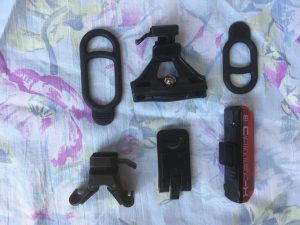
Moon Comet-X Pack
Boasting multiple modes it has 3 Modes for steady light (10/15/25 Lumen) and 3 Flash modes (10/25/25 Lumen) plus a Day Flash mode (50 Lumen) giving a double flash. In day flash mode it has a quoted battery life of 19:30 hours.
Fitting to the seat rails was simple but I discovered a bonus in that if you fit it upside down on the rising part of the seat rails at the rear it tucks nicely under the saddle. Net is a really neat rear end. If you were wearing a jacket with a drop tail in bad weather it would likely obscure the light – but as I rarely ride #1 in bad weather with my Perfetto jacket this is not really a draw back in mounting it that way. Plus in bad weather I tend to fit an additional seat post light anyway.
Given the lockdown I can’t ask my buddy how bright it is from the rear but it looks pretty decent from standing in the garden looking at its effect.
I call that a tidy rear end.
Continue reading →

